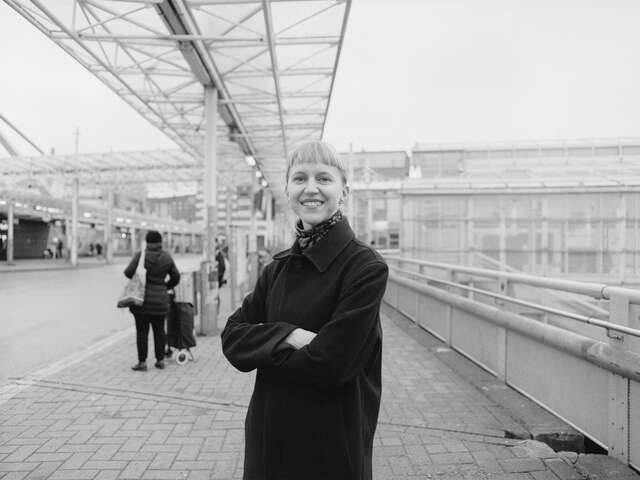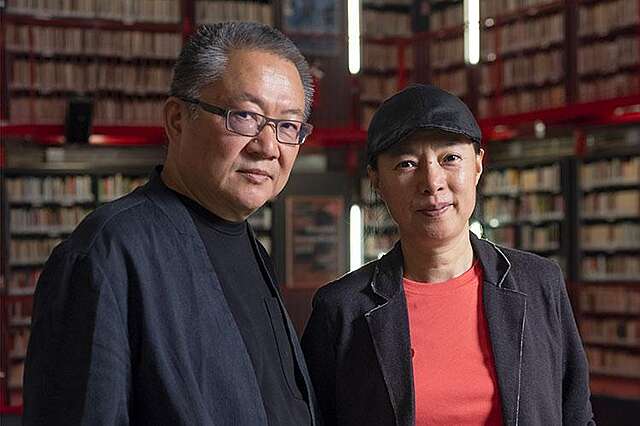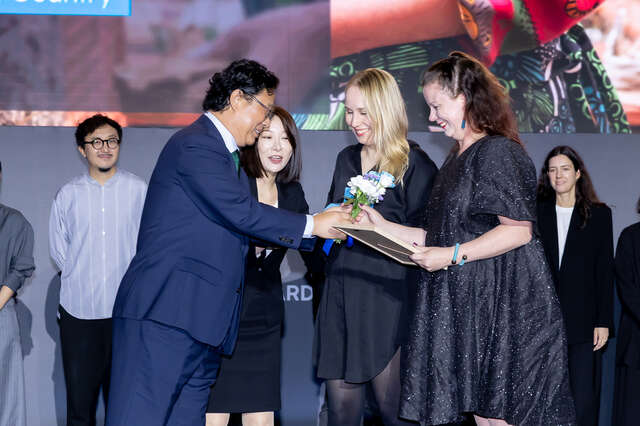Minister Talvitie opens the Pavilion of Finland's exhibition in Venice
Anna Rusi
The opening ceremony of the Pavilion of Finland at the Biennale Architettura took place in Venice on Thursday, 8 May. The exhibition, The Pavilion – Architecture of Stewardship, has received enthusiastic responses from the media and invited guests of the Biennale pre-opening.
Minister of Science and Culture Mari-Leena Talvitie opened Finland’s exhibitions both in the country’s National Pavilion and the Nordic Countries Pavilion, which this year is curated by Architecture & Design Museum Helsinki.
The Pavilion of Finland’s exhibition, The Pavilion – Architecture of Stewardship, challenges us to rethink our relationship with the built environment and the labour that goes into its creation and maintenance. The exhibition focuses on the ongoing process of creation involved in preserving the iconic Pavilion building, designed by Alvar Aalto’s office for Venice’s Giardini della Biennale in 1956.
“Architecture can greatly contribute to creating a sustainable future. By highlighting collaboration and knowledge, The Pavilion – Architecture of Stewardship invites us to rethink our approaches to our existing buildings,” said Minister Talvitie in her opening speech.
Shared responsibility for the maintenance of buildings
As one of just two buildings in Italy designed by the famed Finnish modernist Alvar Aalto – and the only one completed during his lifetime – the Pavilion of Finland carries a mythos that has undoubtedly bolstered its preservation, but which also obscures the many contributors to its ongoing existence. The Pavilion – Architecture of Stewardship aspires to make this often invisible work visible. Curators, architects Ella Kaira and Matti Jänkälä, stress that the Pavilion wouldn’t exist without the ongoing labour and care contributed by many workers throughout its life.
“Rather than portraying artist-architects crafting masterpieces in their sleek offices, we aim to highlight architecture as a labour-intensive process – one that relies not only on architects’ expertise but also on the long-term, intricate knowledge of a wide range of professionals, from builders and maintenance staff to curators and cleaners. Our exhibition seeks to ask whether architecture is a fixed construction or an ongoing collaboration, and recognise the importance of a broad range of contributions to the authorship of buildings,” says Ella Kaira.
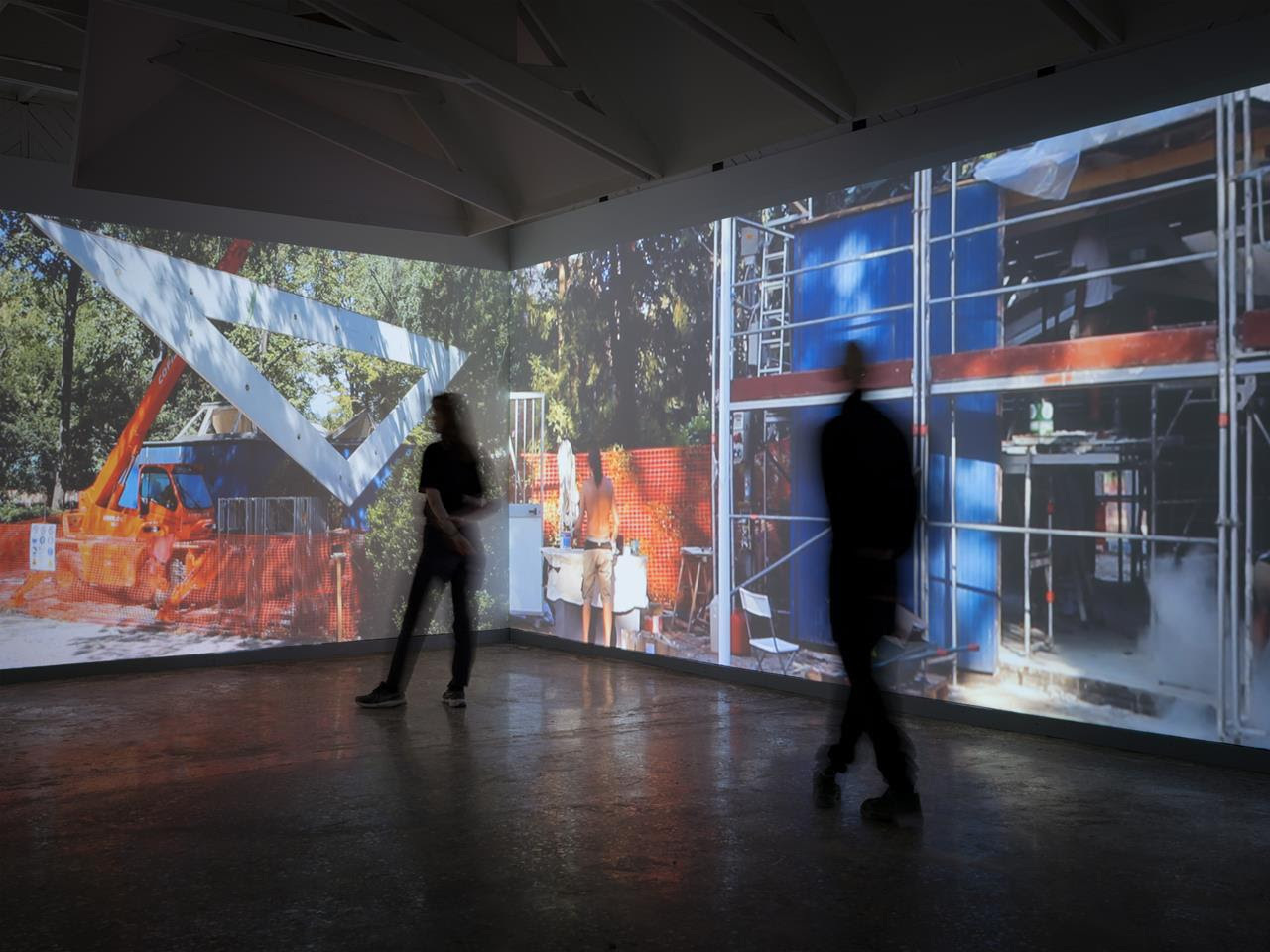
The theme of the Biennale, Intelligens, curated by Carlo Ratti, explores different dimensions of intelligence. In this context, the Pavilion of Finland’s exhibition takes on a new significance: it challenges conventional notions of creativity and intelligence by elevating craftsmanship and individual labour as integral parts of collaborative networks.
“The Pavilion of Finland has long been celebrated as a masterpiece by one of Finland's most internationally renowned architects, but perceptions of authorship have shifted in recent years. The significant contribution made by Alvar Aalto’s wives, Aino Marsio-Aalto and Elissa Aalto, to his corpus of work have been acknowledged, and it is no longer accepted that he was a lone genius, creating in isolation. Kaira and Jänkälä’s exhibition aims to further re-examine the process of authorship by broadening its enquiry to the myriad workers involved in the design, construction and maintenance of the built environment,” says Commissioner, Archinfo Director Katarina Siltavuori.
The Pavilion – Architecture of Stewardship presents the view that Modernism treated our built environment as a collection of “pavilions” – temporary structures, designed for specific purposes and easily replaced by the latest trends, driven by fossil energy. In the context of the climate crisis, the curators argue that all structures should be reconsidered as monuments, characterised by permanence.
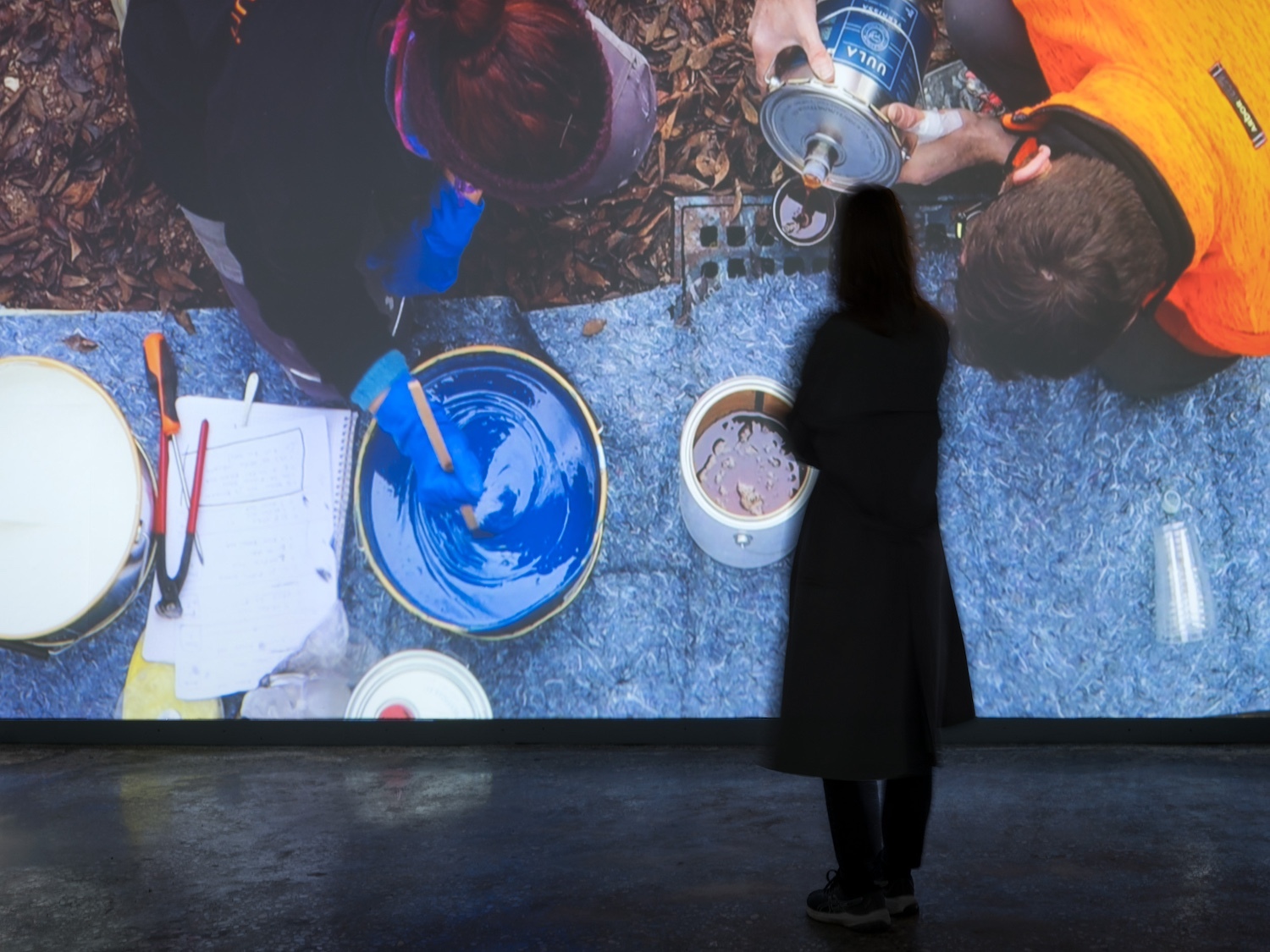
“The climate crisis increasingly forces architects to work on creations of other architects instead of new construction. We propose that approaching the architectural profession as a practice of stewardship enables it to respond to the urgent need for change in our built environment with accountability to communities, future generations, the planet, and other species that inhabit it,” says curator Matti Jänkälä.
Video art and a collection of essays as a narrative medium
Through a video and sound installation, the exhibition brings to life the memories embedded in the walls of the Pavilion, tracing its history from design and construction, through decades of continuous maintenance and three major restorations to the present day and ongoing maintenance efforts. The narrative is carried by voices of those who have contributed to the Pavilion’s preservation and upkeep. The audiovisual piece was created by video artist Merle Karp and sound designer and composer Jussi Hertz. The exhibition structures were designed by architect Antti Auvinen.
In conjunction with the opening, a book edited by Kaira and Jänkälä and titled Architecture of Stewardship was published. The 156-page English-language volume expands on the exhibition’s themes and offers extensive background on both the Pavilion of Finland and its broader context in Venice.
The publication includes fourteen essays and articles by Finnish and Italian experts from various fields, from conservation architects and cultural practitioners to urban activists and nature law researchers. It also features interviews with people who have been involved with the Pavilion, including Professor Emeritus Panu Kaila, known as the “House Doctor,” who led the 1993 restoration.
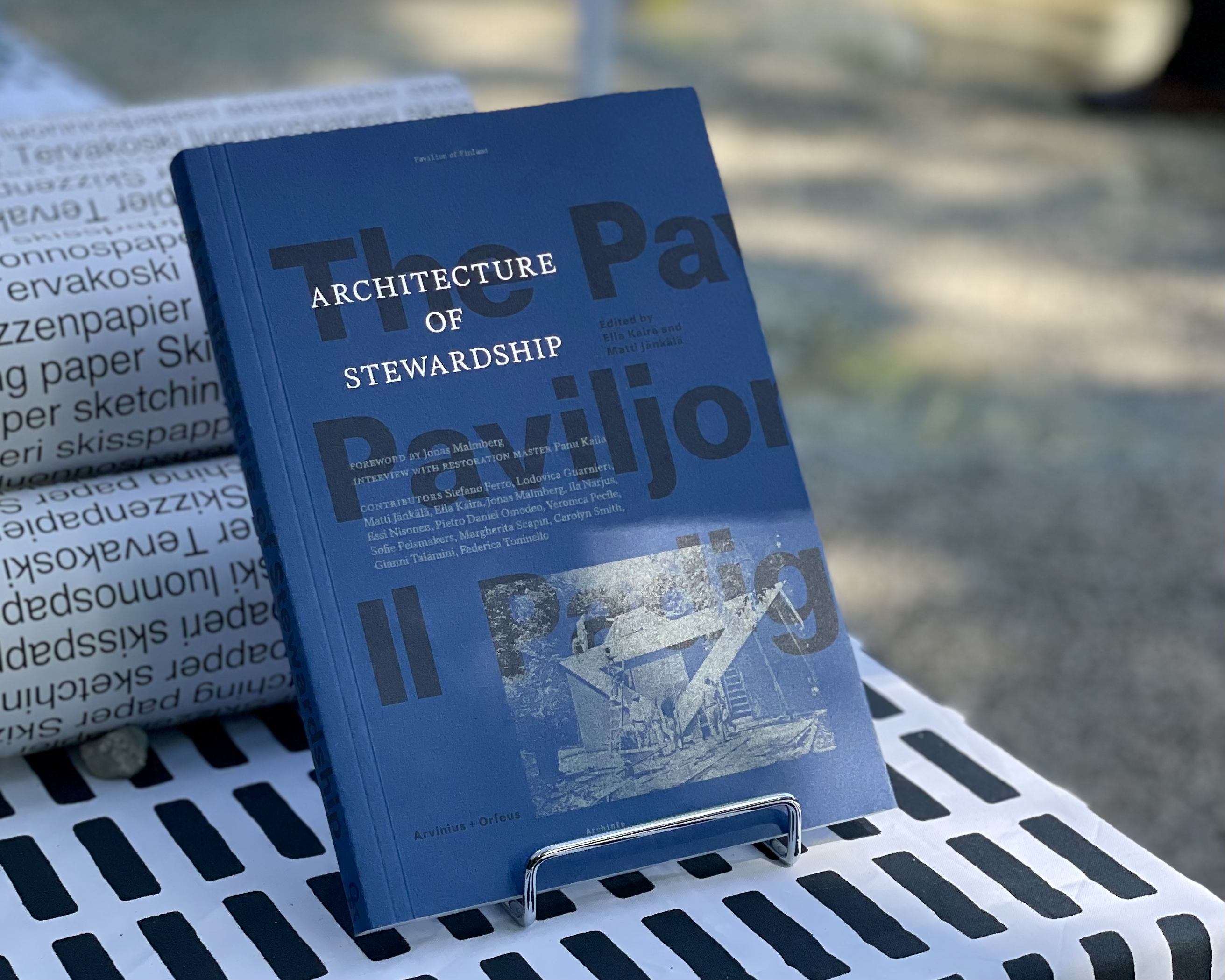
The book’s visual design was created by graphic designer Samuli Saarinen, who also gave the exhibition its graphic identity. The book is published by Arvinius + Orfeus Publishing. Read more about the book through this link.
The main supporter of the exhibition is the Ministry of Education and Culture, Finland. Additional support came from the Finnish Cultural Foundation, with Kontio as the main partner. Other partners include Artek, Tervakoski Ltd, Helsinki Distilling Company, and the Embassy of Finland in Rome. The 19th International Architecture Exhibition of La Biennale di Venezia is open to the public from 10 May to 23 November 2025.
